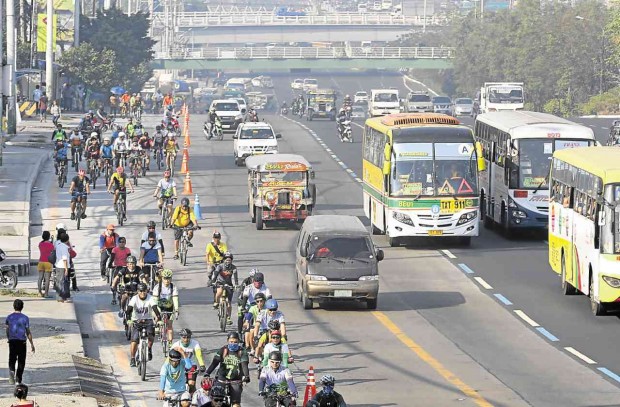QC proposal sets speed limit based on road type
A draft ordinance in Quezon City seeks to impose speed limits depending on the type of road, following findings that the city has been recording the highest number of vehicular accidents in Metro Manila over the past six years.
Under the proposed measure authored by Councilor Oliviere Belmonte, chair of the city council’s transport committee, city roads would have a speed limit of 30 kilometers per hour for all vehicles, while the maximum is 20 kph on barangay or collector roads.
On busier roads, motorists can go only up to 50 kph. The draft ordinance mentions Aurora Boulevard, E. Rodriguez Sr. Avenue, Kamuning Road, Santolan Road and West Avenue as examples where this limit can be imposed.
Vehicles can travel up to 40 kph on East Avenue, Quezon Avenue, Timog Avenue and North Avenue, while they can go up to 60 kph on Commonwealth Avenue.
Only 1 backrider per bike
The draft Ordinance No. 20CC-251, also known as the Road Safety Code of Quezon City, also imposes a stricter “no helmet, no travel” policy for motorcycle riders, and allows only one backrider per motorbike.
It also wants the construction of bicycle lanes to be a City Hall priority, targeting at least 10 kilometers of new lanes annually in the first five years of the measure’s implementation.
Data from the Metropolitan Manila Development Authority showed that from 2010 to 2016, Quezon City consistently recorded the highest number of road crashes, fatalities and injuries among local governments in the capital.
116 road deaths
Last year alone, the city accounted for 33,717 crashes that resulted in 116 deaths, or 27 percent of the total number of road fatalities in the metropolis.
In an interview, Vice Mayor Joy Belmonte expressed hope that the road safety code would reduce the number of road accidents in the capital’s biggest city.
Once passed, the city government would allocate funds needed to fully implement the measure, particularly for the purchase of equipment such as speed guns and more closed-circuit television cameras for no-contact apprehensions, Belmonte added.
